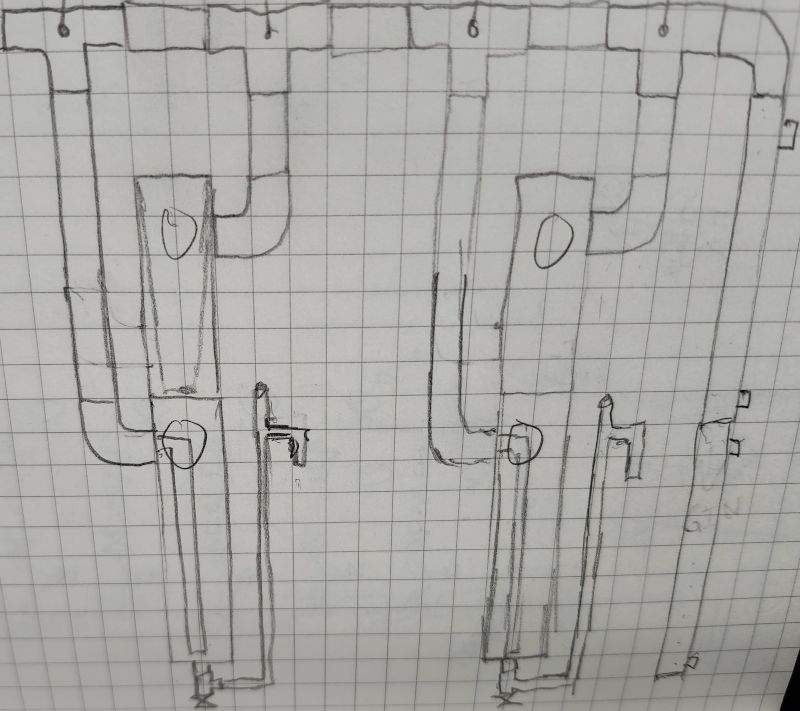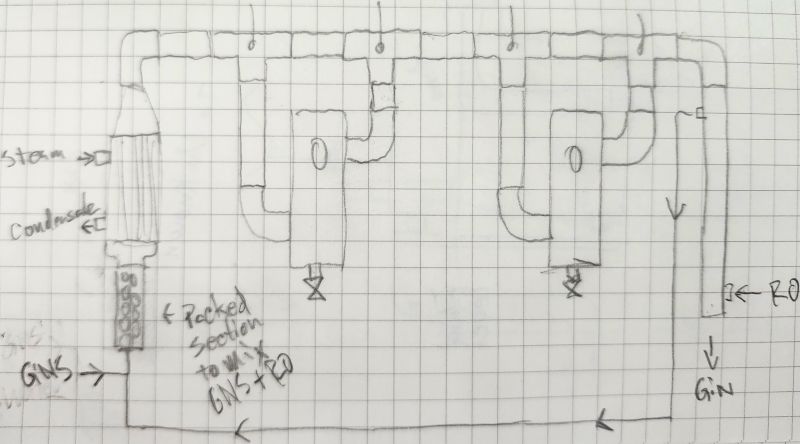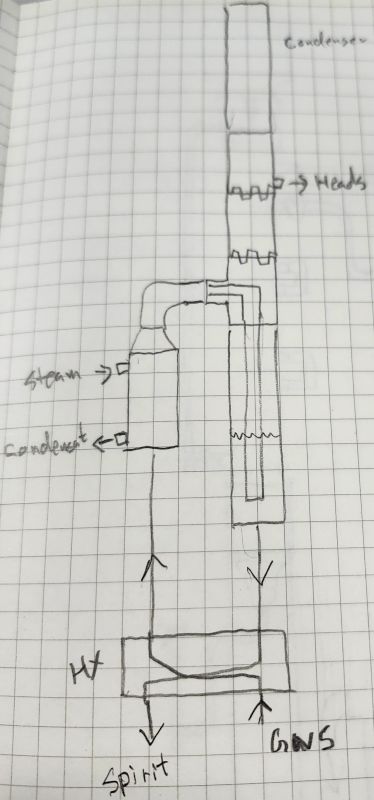-
Do you no longer sell to individual distillers?
@Sandman said: No pricing and no response via email. Has something changed?
We (in the US) did a total reboot on the website and took down pricing on the full systems.
We got side tracked with the completion of the website as we are trying to purchase a property. I do apologize for any confusion.
During this time we also got a new phone system and I absolutely hate it. It has three times now dropped my call in the middle of conversation. I want to smash it with a sledgehammer.
If you need anything just ping me here or on my email. Or just ring my cell @ 954.298.9505. As an aside, since making moves to purchase this property every lender in the country seems to be blowing up my phone. If I don't recognize the number I will often let go to to voice mail. So just leave a message.
If I haven't gotten back to you in a timely matter I do sincerely apologize.
GNS Continuous Still?@grim said: Jesus, 14 years ago…
We were all doing so much experimentation at that stage. most of us didn't have the science of it like you guys, a lot was 'what if'.
Everything from equipment, to methods, to recipes.
@Smaug's thumper pumper was out there too.....
@olddog brought the bubble plate column to the hobby world not long before we all started StillDragon and doing all our product development.
Was a cool time to be part of the hobby.
GNS Continuous Still?Jesus, 14 years ago…
GNS Continuous Still?Growing on the previous picture...
What if you were to do a thumper of sorts with an overflow below the vapor basket with all your masserated botanicals? This would be a highly concentrated maceration. You don't need the thumper for proof but as a way to get some of the more full flavors you don't get with vapor basket.
 GNS Continuous Still?
GNS Continuous Still?@grim is this more or less that you had in mind for the continuous gin still?
 Rotovap
Rotovap@DonalF said: Not a rotovap question but a vacuum still question. Does anyone know if the dragonstill pots (specifically the 380 L pot) can work under negative pressures (i.e. under vacuum) and if so, how low can the vacuum go before there's a risk of impolsion? Any idea what thickness of the 304 stainless steel in the wall of the vessel is?
I'm sure @Smaug will answer, but the answer is likely to never run them under any sort of vacuum.
RotovapNot a rotovap question but a vacuum still question. Does anyone know if the dragonstill pots (specifically the 380 L pot) can work under negative pressures (i.e. under vacuum) and if so, how low can the vacuum go before there's a risk of impolsion? Any idea what thickness of the 304 stainless steel in the wall of the vessel is?
GNS Continuous Still?As much heads as a heads cutter cuts if a heads cutter could cut heads.
In high quality neutral, a few parts per million. Looking at the spec sheet from my last order of fcc/usp grade neutral, it is 20 parts per million (sum of all volatile organics, including methanol). So in 50 gallons, that would be about 375-400ml. You can't remove all of it, since not all of it is more volatile, or may form azeotropes, etc.
GNS Continuous Still?@Smaug, I see what you're saying. What I'm thinking is a cross between the GNS continuous and the LM function of the spirit side of your continuous... like a boka but you're taking off the heads at the LM port and your good spirit out of the bottom of the column.
 GNS Continuous Still?
GNS Continuous Still?@Smaug said: So far the feedback in doing this has shown to further assist in making a more precise on the fly heads cut.
And having said that, if the 4 plate spirit column is for bourbon only, we'll be putting a plate disabler system on. The dedicated bourbon only still only needs 2 plates if you want to go straight into the barrel at an ideal barreling proof. 4 plates allows for finished spirit to come off in the high 150s. The reflux enriches the lower plates too much.
GNS Continuous Still?Yeah, I'm trying to work out a few things too including:
Reboiler HX appears to be a 4" x 750mm shell in tube
column
- Diameter? looks to be about 8"
- Length? about 1m?
- Plate type: sieve vs bubblecaps?
- plate count: 4?
- how do the level sensors control the operation of the unit?
condensor
- looks like a 4" x 1m long
- How does it work to take off heads? Are they drawn off via the vent? As there's a flame arrestor I don't think so as it'd also need a condenser for the heads take off
- Is the line from the bottom of the condenser to close to the bottom of the column the condensed hearts?
Pumps
- What would be the specs of the 2 pumps used for feed in and product out?
- Do they run continuous or does the level sensor(s) turn it on/off?
- I think they'd need to be ATEX/IECEX = $$$
- Could double diaphram pneumatic pumps be used instead of electric?
At 2gpm that comes to 462lph! 96% GNS has a boiling point around 78C so the Preheat HX & reboiler don't have as much work to do compared to running a 10% wash which needs to get to about 93C. So trying to work out what I could do with my available power
GNS Continuous Still?Ah that makes perfect sense.
So in the absence of perfect temp control could a heads trap (like mentioned about halfway down this page) be used to take off the heads as a liquid instead of venting them?
GNS Continuous Still?The operating principal is pretty simple:
- There is a single pass boiler (not reboiler), which vaporizes near 100% of the feed, injecting that vapor into the column, which operates like. thumper. There are no plates in the column.
- Vapor moves up into the condenser, gets condensed, and flows BACK INTO THE "column". You can see the drain located about one quarter/third from the left on the top condenser. It flows to the bottom of the column.
- Column liquid volume is controlled by the level sensor, which operates the discharge valve. There are two pumps, a feed pump, and a discharge pump.
- There is a temperature probe on the vapor vent from the top condenser (port at the top, far end). There is a PID (visible ABB unit) that controls the water flow through that top condenser using the vapor vent temp as process input. The set point controls the amount of input that's removed as vapor.
- The discharge pump drains from the bottom of the column, through the heat exchanger, out.
Everything in the "distillation" stream is product, there are no bottoms (as this is GNS), the only thing removed is a very small amount of "heads" as vapor.
GNS Continuous Still?Photos of the Vendome GNS still in real life: Vendome Continuous GNS Still (New!!) @ ADI Forums
Fats in the Pool?Probably aimed mostly @grim.
Is there any evidence to suggest that having fats in the kettle (in this instance a petchuga styled chicken in the vapor path or in the kettle charge) would have a reactive relationship with heads constituents in such a way that it would sequester perceived heads?
Here is the dude's assertion:
About serious cabbage soup.
My colleague carried out a laboratory analysis of a simple distilled sugar mash with a meat composition and vegetable oil IN ONE TIME WITHOUT SELECTING THE FIRST DROPS.
- Aldehydes 68.1 mg/dm3 (norm – 10-350)
- Ketones (acetone) 0.5 mg/dm3 (norm – 0.1-2.34)
- Esters 337.5 mg/dm3 (norm - 10/50 -1500)
- Methanol 0.0005% vol. (norm – 0.05)
- Higher alcohols (fusel oils - 1658.6 mg/dm3 (norm - 500-4000/6000)
THINK: IN ONE TIME WITHOUT SELECTING THE FIRST DROPS! These are impressive results that are better than the results of double or triple distillation.
The colleague promised to continue to conduct comparative analyzes on oil seeds and meat products. There is a suspicion that the distillate is purified not only by fats, but also by proteins. He must find out.
Stripping Run --> Spirit run: How to minimise wastage?A short packed section with some structured copper mesh is what most of the hobby guys here use on top. I do a 4" x 510mm with mesh screen, clamp and gasket and i sell a heap of them.
Stripping Run --> Spirit run: How to minimise wastage?@BorisTheMidget said: thanks everyone for your responses!
punkin - can i ask for a little more info on this one? When i spoke with the manufacture, they we indicating that 4 plates would be enough for a high quality vodka. To help me learn (i am not trying to be rude), do you believe this is not the case, and could i ask why?
Ok firstly, have a look at anyone making a premium vodka. 16ish to 30 plates would be the tool they use. 30 being the theoretical max. Anyone making vodka with a 4 plate column is just not really making vodka or having success marketing a premium vodka spirit unless they are at least charcoal filtering.
Also consider that less plates than that can certainly render high proof. Lets take a 10 plate column for example (or perhaps even less). If you are able to achieve 95% abv with 10 plates it will not be as "clean" as the same 95% driven through 16 plates or more. Why? Because you will need to run at a higher reflux ratio with the shorter column to maintain proof. The higher reflux ratio means that you will be dragging up "extra" flavor congeners. Particularly with the 4 plate column. Higher plate count with lower reflux ratio is the best way to render the cleanest spirit possible.
The 4 plate column does not at all have the ability to make a proper modern vodka. It is a tool that does much better making flavored spirits like rum , whiskey and brandies.
Now,,you can certainly do multiple runs to clean the spirit up to the extent possible. But in doing so you will loose product and spend additional resources with respect to labor hours and utilities. Now your "basic" vodka costs more to produce than a more desirable whiskey. This is why so many folks source NGS for their vodka. The least desirable spirit costs the most to make. In other words, you can very frequently buy NGS cheaper than it costs to make it unless your distillery is outfitted correctly.
The equipment will never cost more than the labor to operate the equipment over the service life of the equipment. If you want to make a premium vodka, buy a dedicated vodka still.
Use the short plated column for your flagship flavored spirits and put together a smaller dedicated vodka still. It will likely be less expensive than putting together one of those "jack of all trades , master of none" type stills.
Punkin will likely be along to fill in the gaps.
EDIT: Ah wait. Are you a hobbyist? If so the production cost concerns don't have the same priority. You can make "vodka" on any still.
Stripping Run --> Spirit run: How to minimise wastage?thanks everyone for your responses!
@punkin - can i ask for a little more info on this one? When i spoke with the manufacture, they we indicating that 4 plates would be enough for a high quality vodka. To help me learn (i am not trying to be rude), do you believe this is not the case, and could i ask why?
Stripping Run --> Spirit run: How to minimise wastage?What @crozdog said. I used one still for a long time and I would do three strips and then a spirit run. Remember on the spirit run to dilute your spirit down. So if you make 3 strips at 15l each you will have 45l of low wines. You should dilute that down with another 40 or 50 l of water and then do your spirit run.
4" To 6" UpgradeHi @punkin - I hear you on volume/work load! Can always charge less than 380lt, but mostly it'll be a full charge to maximise the capacity and volume output. Maybe smaller charge for trial runs, but I've got the 100lt/4" for that anyway.
Hi @crozdog - I'd prefer to go 8" if I think the powers enough, commercially it makes sense.
Heat up time is what it is really, max power available, how long will it take. We all work with that.
The only metric I have to select the column diameter is vapour speed.
Looked again at my existing 100lt/4"Dash (3 pro-cap plates), vapour speed is actually 16.03 on the run at 4.4kW. Your running 380lt/8", vapour speed is 12.75 on the run at 14kW.
I could do 380lt/8", vapour speed at 13.66 on the run at 15kW (leaving 5kW for the house load; max 20kW incoming main).
I do run my 4" quite hard then at 16.03 vapour speed, I use a good bit of reflux on this to maintain product flow. With 8" running at 15kW the heat to cooling ratio would be changed i.e. less reflux cooling at this lower vapour speed to maintain product flow. Is that the right thinking?
Really my big concern about going up to 8" was will I be able to power a decent enough flow rate, sound like I can albeit with a lower vapour speed than I'm used to on the 4".
Also 100lt to 380lt is almost quadruple, 4" to 8" is quadruple area. Roughly speaking then my heat-up/run time will be around the same for the same wash.
When I say sugar wash I mean molasses, demerara and granulated sugar blend, so there are some interesting things in the heads/tails and I do want to barrel age. Currently ageing on Still Dragon supplied oak woods, done one whisky cask aged for 8 months and it was outrageously good and sold out fast!





